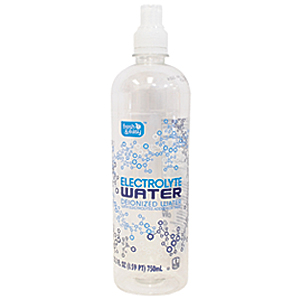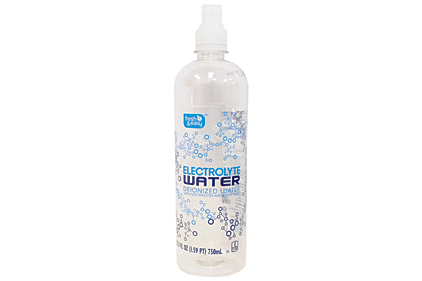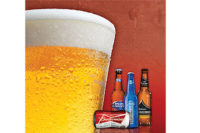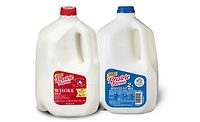Whether it’s because of private label’s added value or perceptions of comparable quality to name brands, consumers have found favor with private label consumer packaged goods (CPGs). Private label accounts for 14.4 percent of CPG dollar sales and 17.1 percent of unit sales, says Susan Viamari, editor of SymphonyIRI Group's Times & Trends report.

|
| Fresh & Easy released its Electrolyte Water earlier this year. Private label bottled water has experienced success in both still and sparkling sub-categories, according to SymphonyIRI data. |
"This marks a unit share decline for the second straight year, while dollar sales continue to inch upward, driven heavily by the fact that private label prices are increasing more quickly versus the industry average," Viamari says.
For beverages, Viamari says that private label accounts for 7.8 percent of dollar sales — down 0.2 points versus 2011 — and 9.1 percent of unit sales — down 0.6 percent versus 2011.
The Chicago-based market research firm also noted in its November 2012 Times & Trends report "Reversal of Fortune: National Brands Pick Up Gains on Private Label," that CPG private label has received mixed results.
“Our new report demonstrates that growth is uneven across different categories and channels; its success still relies heavily on price discounts, and private label purchases are quite concentrated among a minority of shoppers,” said Daniel Grubbs, principal of SymphonyIRI Consulting, in the report.
Jonas Feliciano, beverage analyst with Chicago-based Euromonitor International, notes that although larger format stores such as club/warehouse stores see strong private label performance due to price differentiation based on large quantities, other channels are developing their own private label brands, such as Walgreens' Nice! brand.
“The price points are good, and it’s continuous branding throughout the store, whether it be that Nice! branding on bottled water, carbonates and even private label going into tissue paper and household goods, so we’re seeing Walgreens take a stab and somewhat doing a good job of launching their own private label in the drug store channel,” he says.
Although some channels and categories have faced their challenges within private label CPG, other categories have shown promise. Listed as one of the top categories with above average and increasing private label share in the Times & Trends report, the bottled water category recorded a point change increase of 2.6 percent penetration among category buyers for 2012 versus 2010 in multi-outlet (supermarkets, drug stores, mass market retailers, military commissaries and select club and dollar retail chains) and convenience stores for the 52 weeks ending Sept. 9, 2012, based on dollar sales, according to SymphonyIRI Market Advantage.
Dollar sales for the still bottled water sub-category also demonstrate the growth of private label. SymphonyIRI reported that private label for still bottled water increased 12.5 percent in the 52 weeks ending Oct. 7, 2012, in SymphonyIRI measured channels.
Euromonitor’s Feliciano notes that within the bottled water category, private label benefits from consumers’ perception of its quality compared to name brands.
The sparkling bottled water segment also has experienced growth. Overall, the sub-category increased more than 33 percent during the 52 weeks ending Oct. 7, 2012, in SymphonyIRI-measured channels. Within that segment, private label grew just shy of 9 percent in that same time period.
However, bottled water is not the only category that has seen proliferation of its private label products.
“One of the most interesting things has been how quickly private label moved on the liquid concentrate boat,” Feliciano says. “In the past year and a half with the success of Mio, it was duplicated very well by private label; you saw both Walmart and Target and, I believe, Supervalu all launching their own liquid concentrate or beverage enhancers in the same venue as Mio.”
In addition to bottled water and complementary categories such as liquid concentrates, other categories also have seen private label products gain a portion of the market share.
In SymphonyIRI’s Times & Trends report on CPG private label products, the energy drinks category was named as a top category with below average and increasing private label share. Private label penetration among energy drink category buyers recorded a point change increase of 2.6 percent for 2012 versus 2010 in multi-outlets and convenience channels for the 52 weeks ending Sept. 9, 2012, based on dollar sales, according to SymphonyIRI Market Advantage.
Feliciano notes that in addition to energy drinks, he sees private label coming more and more into play in the ready-to-drink tea category.
But no matter which beverage category retailers are seeking to replicate, quality comparison can be an important part of development and success.
“The differentiator is price point, but the key for their success is being able to match a successful branded product,” Feliciano says. BI




